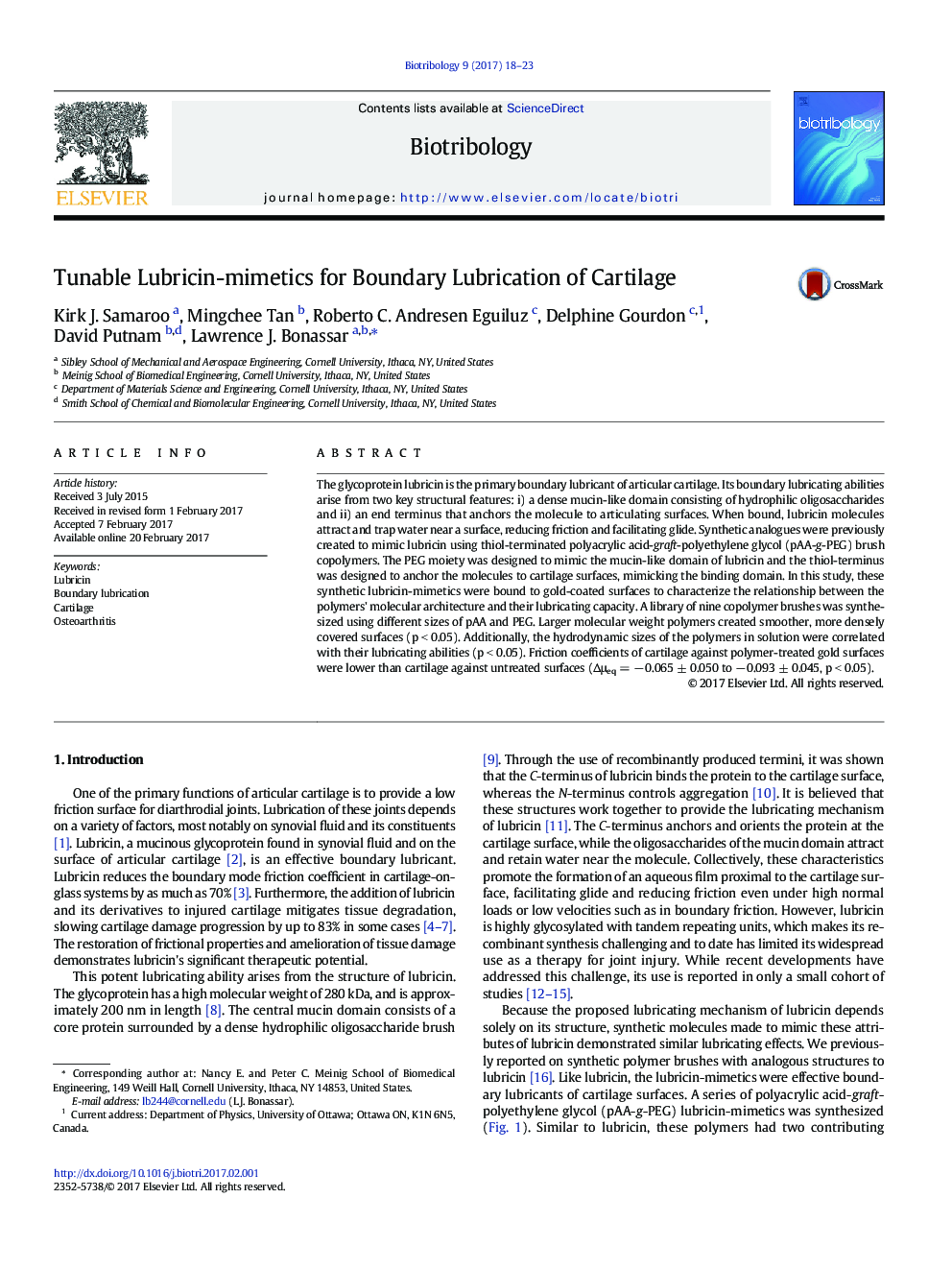| کد مقاله | کد نشریه | سال انتشار | مقاله انگلیسی | نسخه تمام متن |
|---|---|---|---|---|
| 5011157 | 1462449 | 2017 | 6 صفحه PDF | دانلود رایگان |

- A library of pAA-g-PEG polymers was synthesized to mimic the structure of lubricin.
- The polymers self-assembled onto gold-coated glass slides.
- The interaction between the polymers and the gold surfaces were imaged using AFM.
- Polymers on gold were oscillated against cartilage explants.
- Larger polymers covered more area and lubricated better.
The glycoprotein lubricin is the primary boundary lubricant of articular cartilage. Its boundary lubricating abilities arise from two key structural features: i) a dense mucin-like domain consisting of hydrophilic oligosaccharides and ii) an end terminus that anchors the molecule to articulating surfaces. When bound, lubricin molecules attract and trap water near a surface, reducing friction and facilitating glide. Synthetic analogues were previously created to mimic lubricin using thiol-terminated polyacrylic acid-graft-polyethylene glycol (pAA-g-PEG) brush copolymers. The PEG moiety was designed to mimic the mucin-like domain of lubricin and the thiol-terminus was designed to anchor the molecules to cartilage surfaces, mimicking the binding domain. In this study, these synthetic lubricin-mimetics were bound to gold-coated surfaces to characterize the relationship between the polymers' molecular architecture and their lubricating capacity. A library of nine copolymer brushes was synthesized using different sizes of pAA and PEG. Larger molecular weight polymers created smoother, more densely covered surfaces (p < 0.05). Additionally, the hydrodynamic sizes of the polymers in solution were correlated with their lubricating abilities (p < 0.05). Friction coefficients of cartilage against polymer-treated gold surfaces were lower than cartilage against untreated surfaces (Îμeq = â 0.065 ± 0.050 to â 0.093 ± 0.045, p < 0.05).
Journal: Biotribology - Volume 9, March 2017, Pages 18-23